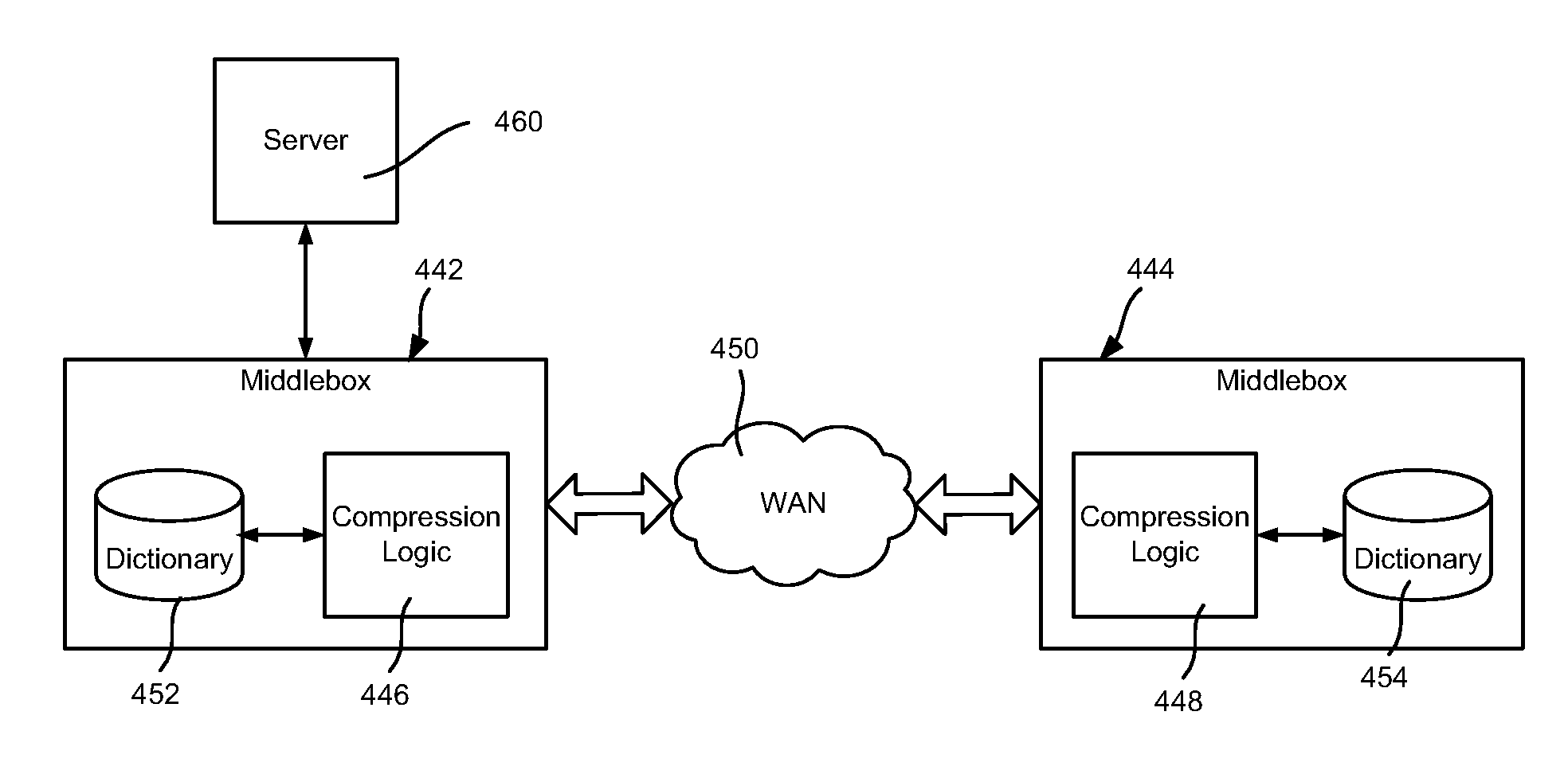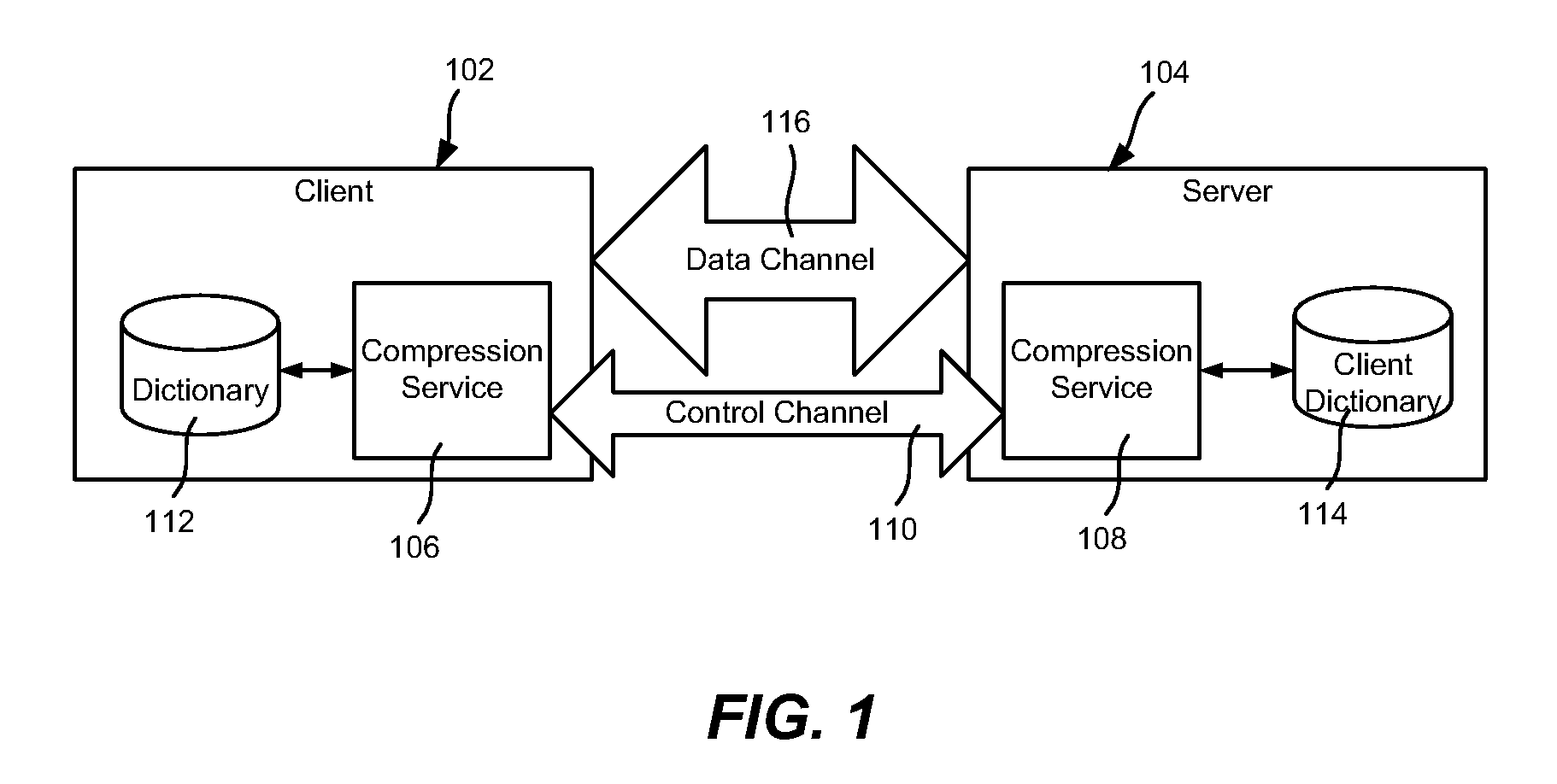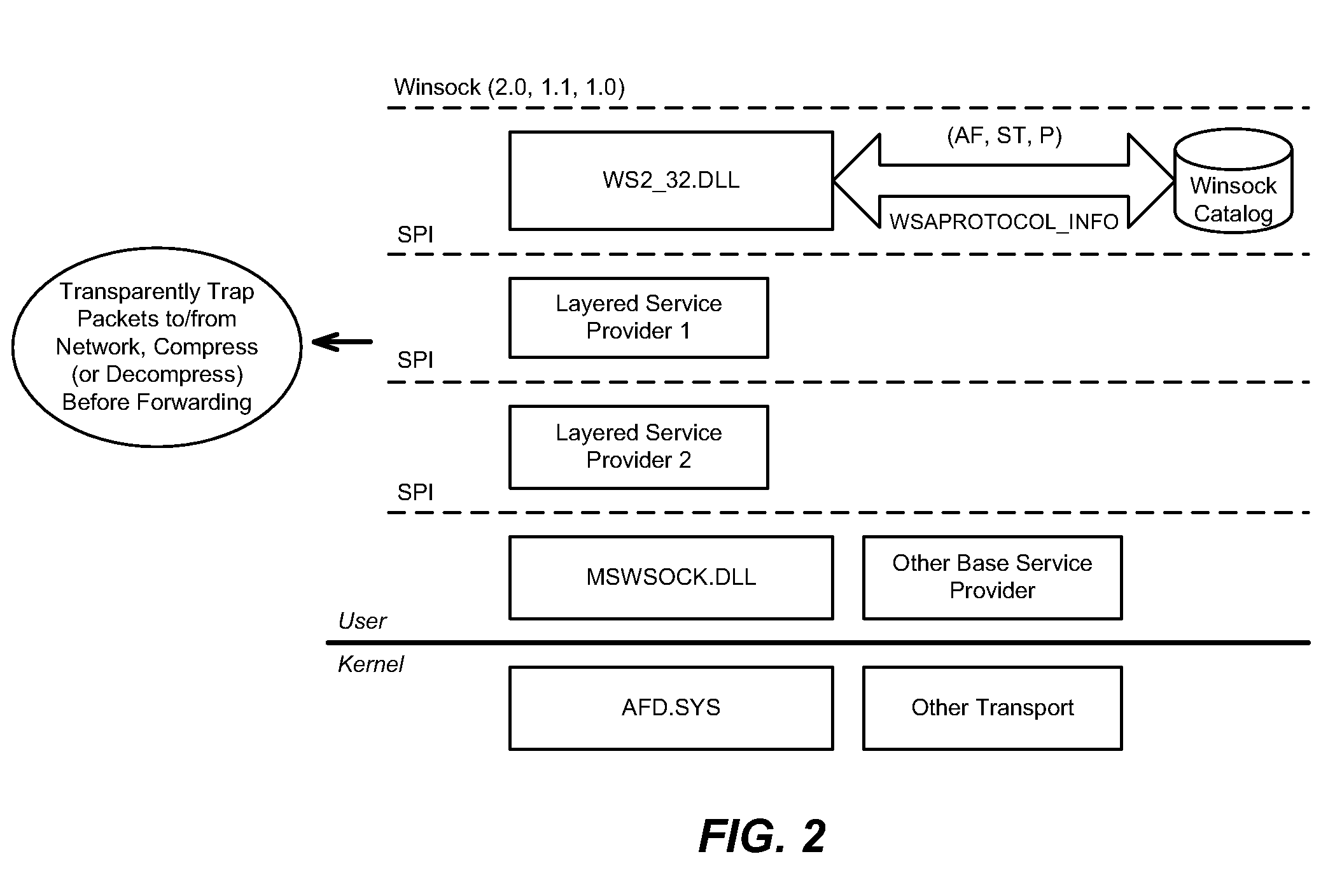Content compression in networks
a content compression and network technology, applied in the field of content compression in networks, can solve the problems of affecting performance, affecting network performance, and affecting network performance, and achieve the effects of reducing network costs, reducing network traffic, and reducing network traffi
- Summary
- Abstract
- Description
- Claims
- Application Information
AI Technical Summary
Benefits of technology
Problems solved by technology
Method used
Image
Examples
Embodiment Construction
lative content decompression.
[0020]FIG. 10 is a block diagram representing example components for implementing compression-aware routing.
[0021]FIG. 11 is a block diagram representing example components for implementing packet scheduling and fairness.
[0022]FIG. 12 is a block diagram representing example components for implementing
[0023]FIG. 13 shows an illustrative example of a computing environment into which various aspects of the present invention may be incorporated.
DETAILED DESCRIPTION
[0024]Various aspects of the technology described herein are generally directed towards content compression in networks that operates in a manner that saves bandwidth costs / improves networking performance by eliminating redundancy in traffic. To this end, there is generally described protocol-independent content compression between hosts and access routers, between routers / middleboxes on bandwidth-limited links, and also directly between hosts.
[0025]In one aspect, the technology described herein pr...
PUM
 Login to View More
Login to View More Abstract
Description
Claims
Application Information
 Login to View More
Login to View More - R&D
- Intellectual Property
- Life Sciences
- Materials
- Tech Scout
- Unparalleled Data Quality
- Higher Quality Content
- 60% Fewer Hallucinations
Browse by: Latest US Patents, China's latest patents, Technical Efficacy Thesaurus, Application Domain, Technology Topic, Popular Technical Reports.
© 2025 PatSnap. All rights reserved.Legal|Privacy policy|Modern Slavery Act Transparency Statement|Sitemap|About US| Contact US: help@patsnap.com



